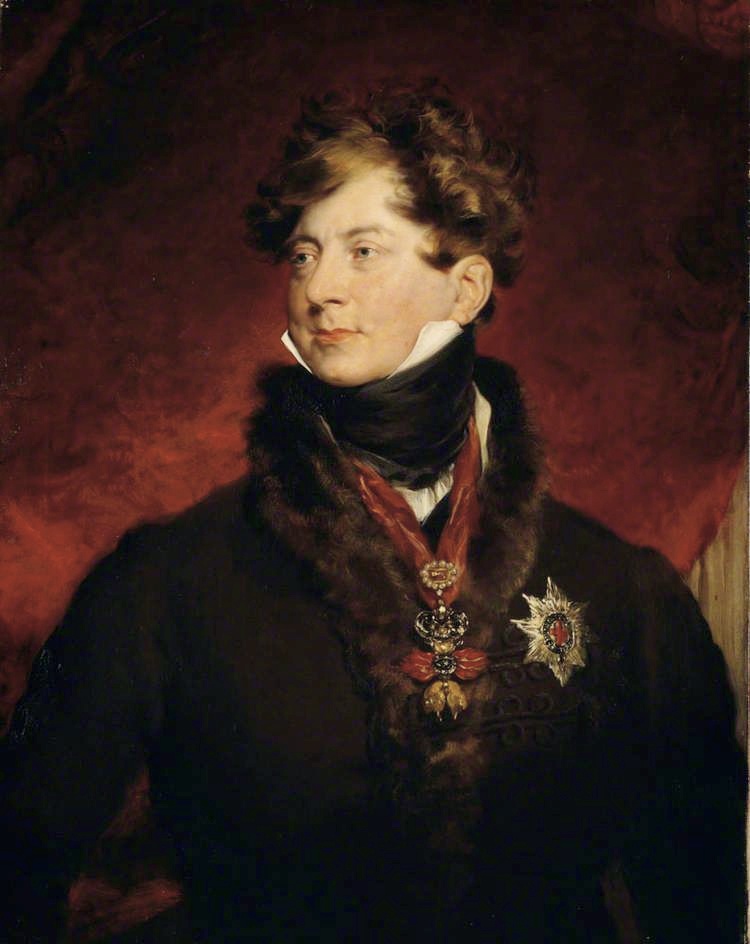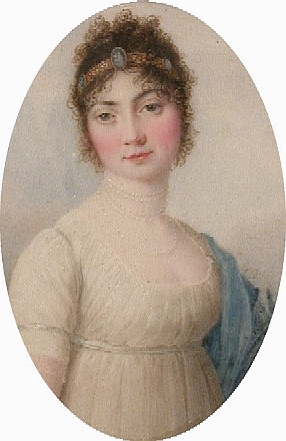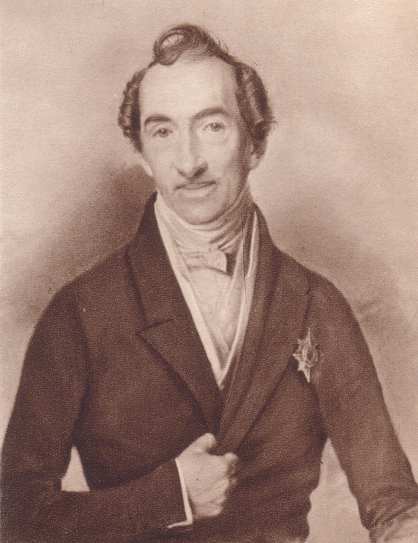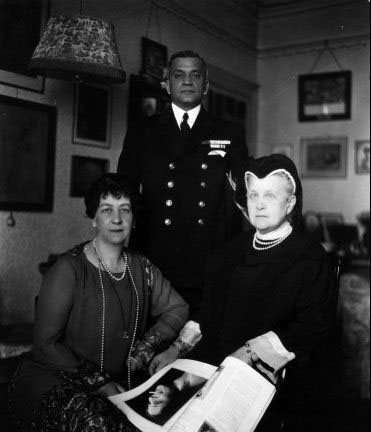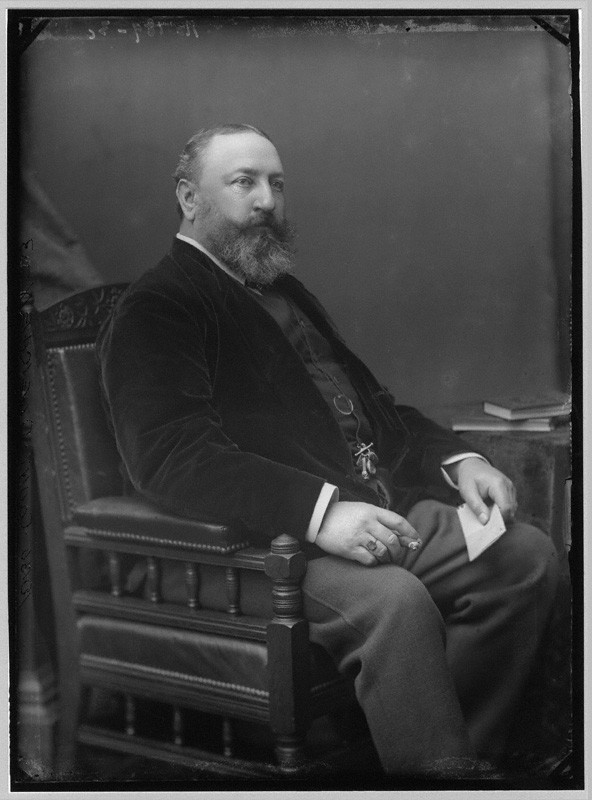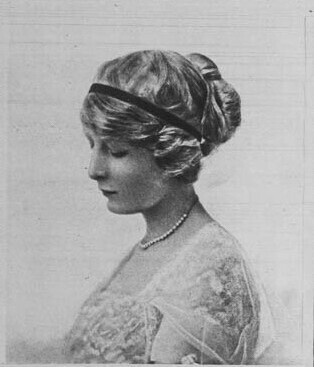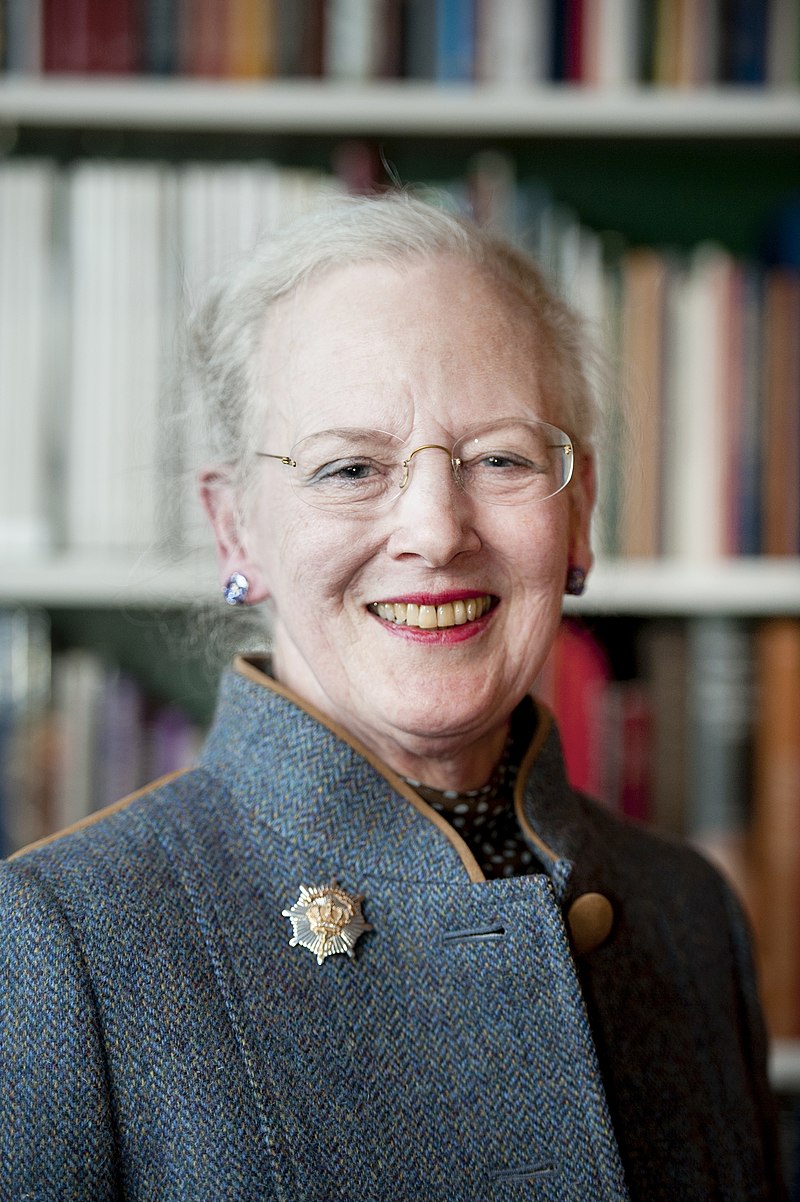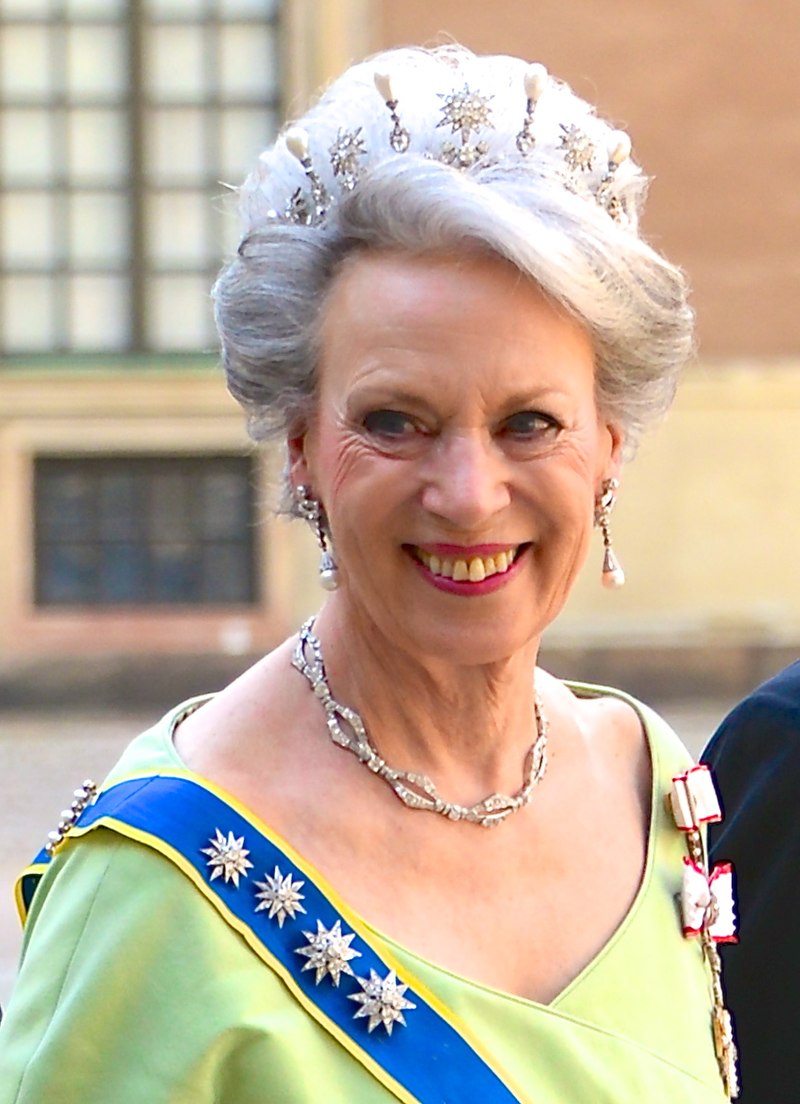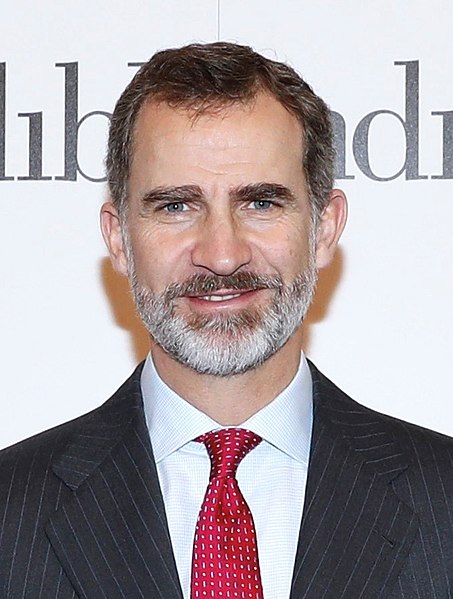by Susan Flantzer
© Unofficial Royalty 2019

Queen Victoria of the United Kingdom (1819 – 1901)
(All photos credits – Wikipedia unless otherwise noted)
Queen Victoria was born at Kensington Palace in London, England on May 24, 1819. She was the only child of Prince Edward, Duke of Kent and Princess Victoria of Saxe-Coburg-Saalfeld. Victoria’s father died when she was eight months old. Her paternal grandparents were King George III of the United Kingdom and Charlotte of Mecklenburg-Strelitz. Her maternal grandparents were Franz Friedrich Anton, Duke of Saxe-Coburg-Saalfeld and Augusta Reuss of Erbesdorf.
Eighteen months before Victoria’s birth, her first cousin Princess Charlotte of Wales died in childbirth along with her son. At the time of her death, Charlotte, who was second in line to the throne, was the only legitimate grandchild of King George III, despite the fact that twelve of his fifteen children were still alive. If Charlotte had survived her grandfather King George III and her father, the future King George IV, she would have become Queen. Her death left no legitimate heir in the second generation and prompted the aging sons of King George III to begin a frantic search for brides to provide for the succession. Victoria’s father was the fourth son of King George III but the eldest son who had a surviving child and so Victoria became the heir to the throne during the reign of George III’s third son King William IV and succeeded to the throne upon his death.
Victoria married her maternal first cousin Prince Albert of Saxe-Coburg and Gotha and had nine children. She was the longest-reigning British sovereign until her great-great-great-granddaughter Queen Elizabeth II surpassed the length of her reign in 2015.
Victoria had seven paternal first cousins and 21 maternal first cousins. She shared her maternal first cousins with her half-siblings Carl, 3rd Prince of Leiningen and Princess Feodora of Leiningen, Princess of Hohenlohe-Langenburg and her husband Prince Albert of Saxe-Coburg and Gotha.
********************
Paternal Aunts and Uncles of Queen Victoria: Children of King George III of the United Kingdom and Charlotte of Mecklenburg-Strelitz
- King George IV (1762 – 1830), married Caroline of Brunswick-Wolfenbüttel, had one daughter Princess Charlotte of Wales who died in childbirth as did her child
- Prince Frederick, Duke of York (1763 – 1827), married Frederica of Prussia, no children
- King William IV (1765 – 1837), married Adelaide of Saxe-Meiningen, no surviving legitimate issue, had illegitimate children
- Charlotte, Princess Royal, Queen of Württemberg (1766 – 1828), married King Friedrich I of Württemberg, no surviving children
- Princess Augusta Sophia (1768 -1840), never married, no children
- Princess Elizabeth, Landgravine of Hesse-Homburg (1770 – 1840), married Friedrich, Landgrave of Hesse-Homburg, no children
- King Ernest Augustus I of Hanover, Duke of Cumberland (1771 – 1851), married Friederike of Mecklenburg-Strelitz; had one son
- Prince Augustus Frederick, Duke of Sussex (1773 – 1843), married twice, both in contravention of the Royal Marriages Act of 1772 1) Lady Augusta Murray, had one son and one daughter, marriage annulled 2) Lady Cecilia Buggin (later 1st Duchess of Inverness), no children
- Prince Adolphus, Duke of Cambridge (1774 – 1850), married Augusta of Hesse-Kassel, had one son and two daughters
- Princess Mary, Duchess of Gloucester (1776 – 1857), married Prince William Frederick, Duke of Gloucester, no children
- Princess Sophia (1777 – 1848), never married, possible illegitimate issue
- Prince Octavius (1779 – 1783), died in childhood
- Prince Alfred (1780 – 1782), died in childhood
- Princess Amelia (1783 – 1810), never married
********************
Maternal Aunts and Uncles of Queen Victoria: Children of Franz Friedrich Anton, Duke of Saxe-Coburg-Saalfeld and Augusta Reuss of Erbesdorf
- Sophie of Saxe-Coburg-Saalfeld, Countess of Mensdorff-Pouilly (1778 – 1835), married Emmanuel, Count of Mensdorff-Pouilly, had six sons
- Antoinette of Saxe-Coburg-Saalfeld, Duchess of Württemberg (1779 – 1824), married Alexander of Württemberg, had four sons and one daughter
- Juliane of Saxe-Coburg-Saalfeld (Grand Duchess Anna Feodorovna after marriage) (1781 – 1860), married Grand Duke Constantine Pavlovich of Russia, no issue, marriage annulled in 1820; had two illegitimate children
- Ernst I, Duke of Saxe-Coburg-Gotha (1784 – 1844), married (1) Princess Louise of Saxe-Gotha-Altenburg, had two sons, Ernst II, Duke of Saxe-Coburg and Gotha and Prince Albert, husband of Queen Victoria; married (2) Duchess Marie of Württemberg, daughter of his sister Antoinette, no issue; had three illegitimate children
- Ferdinand of Saxe-Coburg and Gotha (1785 – 1851), married Princess Maria Antonia Koháry, had three sons and one daughter including Ferdinand. King Consort of Portugal and Victoria, Duchess of Nemours; was the grandfather of Tsar Ferdinand I of Bulgaria
- Leopold I, King of the Belgians (1790 – 1865), married (1) Princess Charlotte of Wales, only child of George, Prince of Wales (King George IV), died in childbirth along with her son (2) Princess Louise of Orléans, had three sons and one daughter including Leopold II, King of the Belgians and Charlotte, Empress Carlota of Mexico
- Franz Maximilian Ludwig of Saxe-Coburg-Saalfeld (1792 – 1793), died in infancy
********************
PATERNAL FIRST COUSINS
Paternal First Cousins: Child of King George IV of the United Kingdom and Caroline of Brunswick

Princess Charlotte of Wales (1796 – 1817)
Had Princess Charlotte of Wales survived her grandfather King George III and her father King George IV, she would have become Queen of the United Kingdom. During her lifetime, Charlotte was second in the line of succession to the British throne after her father. Charlotte married Prince Leopold of Saxe-Coburg-Saalfeld and died in childbirth at the age of 21 along with her son eighteen months later. Charlotte’s pregnancy and delivery had been grossly mismanaged and the doctor in charge later died by suicide. She was mourned by the British people in a manner similar to the mourning of Diana, Princess of Wales. There is a very moving memorial to Charlotte in St. George’s Chapel at Windsor Castle. Charlotte’s body is draped as she ascends to heaven along with angels, one of which carries her stillborn son.

Memorial to Charlotte; Credit – http://www.stgeorges-windsor.org/
Charlotte’s widower Prince Leopold of Saxe-Coburg-Saalfeld greatly mourned Charlotte but his connection with the British Royal Family continued. He was the uncle of both Queen Victoria and her husband Prince Albert of Saxe-Coburg-Gotha. Leopold went on to become the first King of the Belgians, having been elected King by the Belgian National Congress in 1831.
********************
Paternal First Cousins: Child of King Ernest Augustus I of Hanover, Duke of Cumberland and Teviotdale and Friederike of Mecklenburg-Strelitz

George V, King of Hanover, Duke of Cumberland and Teviotdale (1819 – 1878)
Prince George of Cumberland, the last King of Hanover, was the only child of King George III’s fifth son Ernest Augustus, Duke of Cumberland and Teviotdale. George was born three days after his first cousin Princess Alexandrina Victoria of Kent (later Queen Victoria), who was ahead of her cousin in the succession by being the child of King George III’s fourth son. In 1828, an accident with a swinging set of keys resulted in George losing some vision. By 1835, George was completely blind. George married Princess Marie of Saxe-Altenburg and had one son and two daughters.
In 1837, upon the accession of Queen Victoria, George’s father became King of Hanover. Up until the point, Hanoverian kings of the United Kingdom were also Electors or Kings of Hanover. However, Hanover followed the Salic Law which did not allow female succession. Ernest Augustus, as the eldest surviving son of King George III, became King of Hanover and his son George became the Crown Prince. George succeeded his father as King of Hanover and Duke of Brunswick-Lüneburg, as well as Duke of Cumberland and Teviotdale, in the Peerage of Great Britain, and Earl of Armagh, in the Peerage of Ireland. Fifteen years later, the monarchy was abolished when Hanover was annexed by Prussia.
********************
Paternal First Cousins: Children of Prince Augustus, Duke of Sussex and Lady Augusta Murray
The sixth son and the ninth of the fifteen children of King George III of the United Kingdom and Charlotte of Mecklenburg-Strelitz, Prince Augustus, Duke of Sussex is infamously known for making two marriages in contravention of the Royal Marriages Act 1772. The first marriage to Lady Augusta Murray resulted in the birth of two children. The marriage was null and void because it violated the Royal Marriages Act and the children were considered illegitimate and did not have succession rights. Nevertheless, they were first cousins of Queen Victoria.
Augustus Frederick d’Este (1794 – 1848)
Augustus Frederick D’Este was an active member of the Aborigines Protection Society and was particularly interested in Native Americans. He was also the earliest recorded person for whom a definite diagnosis of multiple sclerosis can be made. The diagnosis was made in 1948 after the discovery of the diaries he kept for 22 years detailing his symptoms. He never married, probably due to his illness.
********************

Augusta Emma d’Este, Baroness Truro (1801-1866)
Augusta Emma D’Este married Thomas Wilde, 1st Baron Truro, but their marriage was childless. Like her father, she suffered from asthma and spent time in the warmer climates of Europe to ease her symptoms. Augusta kept in touch with her father and spent time at court attending Queen Adelaide, the wife of her uncle King William IV.
********************
Paternal First Cousins: Children of Prince Adolphus, Duke of Cambridge and Augusta of Hesse-Kassel

Prince George, 2nd Duke of Cambridge (1819 – 1904)
A maternal uncle of Princess Victoria Mary of Teck, the wife of King George V, Prince George was the son of King George III’s seventh son. He was born two months before his first cousin Princess Alexandrina Victoria of Kent (Queen Victoria), who was ahead of her cousin in the line of succession by being the child of King George III’s fourth son. George married actress Sarah Louisa Fairbrother and had three sons but the marriage was in contravention of the Royal Marriages Act so it was not legal and children of the marriage were illegitimate.
Because George’s sons were illegitimate, his title Duke of Cambridge became extinct upon his death. 107 years later, the title Duke of Cambridge was created for Prince William, his father’s great-great-great-great-grandson and the grandson of Queen Elizabeth II, on the occasion of William’s wedding.
********************
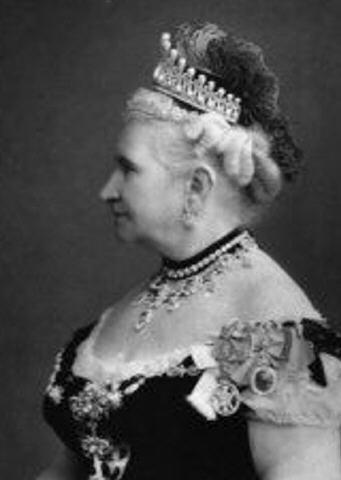
Princess Augusta of Cambridge, Grand Duchess of Mecklenburg-Strelitz (1822 – 1916)
Princess Augusta of Cambridge married her maternal first cousin Friedrich Wilhelm, Grand Duke of Mecklenburg-Strelitz and had two sons, but only one survived to adulthood. Because she had no daughter of her own, Augusta became very close with her niece Mary (May) of Teck, later the wife of King George V of the United Kingdom, and the two corresponded regularly until Augusta’s death.
Prior to the coronation of King Edward VII of the United Kingdom and his wife Queen Alexandra in 1902, which Augusta attended, she was consulted on matters of ceremony and attire as she was almost the only person alive who could remember the coronation of King William IV and Queen Adelaide. Her recollection of Queen Victoria’s coronation also proved invaluable. Unfortunately, due to old age, Augusta was not able to attend the coronation of her niece May (Queen Mary) and her husband King George V of the United Kingdom in 1911.
At the time of her death, Augusta was 94 years, 4 months and 16 days old which made her, at that time, the longest-lived British Princess of the Blood Royal. Princess Alice of Albany, Countess of Athlone, the daughter of Queen Victoria’s son Prince Leopold, became the longest-lived British Princess of the Blood Royal in 1977 and died four years later at the age of at age 97 years and 313 days.
********************

Princess Mary Adelaide of Cambridge, Duchess of Teck (1833 – 1897)
Princess Mary Adelaide was a granddaughter of King George III, the mother of King George V’s wife Queen Mary, the grandmother of King Edward VIII and King George VI, and the great-grandmother of Queen Elizabeth II. Mary Adelaide weighed approximately 250 pounds and was affectionately known as “Fat Mary.” Her first cousin Queen Victoria wrote of her, “Her size is fearful. It is really a misfortune.” Because of her large size, many members of her family considered her unmarriageable. Mary Adelaide, however, was high-spirited and full of life and was adored by the Victorian public who called her “The People’s Princess.”
However, she married Francis, Duke of Teck and had two sons in addition to her already-mentioned daughter. Mary Adelaide devoted her life to charity, serving as the first royal patron of Barnardo’s, a charity still in existence, founded by Thomas Barnardo in 1866 to care for vulnerable children and young people. Barnardo’s has a long history of royal patrons and presidents including Queen Alexandra, Queen Mary (Mary Adelaide’s daughter), Queen Elizabeth II, Diana, Princess of Wales, and Queen Consort Camilla.
********************
MATERNAL FIRST COUSINS
Maternal First Cousins: Children of Princess Sophie of Saxe-Coburg-Saalfeld and Emmanuel, Count of Mensdorff-Pouilly

Alexander von Mensdorff-Pouilly (1813 – 1871)
Alexander had a career in the Austrian Army and attained the rank of Lieutenant Field Marshal. He was the Austrian ambassador to Russia, Governor of Austrian Galicia, and Foreign Minister of the Austrian Empire. Alexander married Alexandrine von Dietrichstein, the heiress of Prince Joseph von Dietrichstein, and had two sons.
Other First Cousins: Children of Sophie of Saxe-Coburg-Saalfeld and Emmanuel, Count og Mensdorff-Pouilly
- Hugo of Mensdorff-Pouilly (1806 – 1847), unmarried
- Alphons of Mensdorff-Pouilly (1810 – 1894), married (1) Countess Therese von Dietrichstein-Proskau-Leslie, had two daughters (2) Countess Maria Therese von Lamberg, had one son
- Alfred of Mensdorff-Pouilly (1812 – 1814), died in early childhood
- Leopold of Mensdorff-Pouilly (1815 – 1821), died in childhood
- Arthur of Mensdorff-Pouilly (1817 – 1904), married (1) Magdalene Kremzow, no children (2) Bianca von Wickenburg, no children
********************
Maternal First Cousins: Children of Antoinette of Saxe-Coburg-Saalfeld and Alexander of Württemberg

Duchess Marie of Württemberg, Duchess of Saxe-Coburg and Gotha (1799 – 1860)
When she was 33-years-old, Marie became the second wife of her 48-year-old maternal uncle Ernst I, Duke of Saxe-Coburg and Gotha. After her marriage, Marie was not only the first cousin but also the stepmother of her husband’s sons from his first marriage, Ernst (later Ernst II, Duke of Saxe-Coburg and Gotha) and Albert (later husband of Queen Victoria). Marie and Ernst had no children, but Marie had a good relationship with her stepsons and maintained a correspondence with Albert throughout their lives.
********************

Duke Alexander of Württemberg (1804 – 1881)
Alexander’s branch of the Württemberg was not considered very prestigious but he did have some impressive royal connections. He was the nephew both of King Friedrich I of Württemberg (via his father) and of Leopold I of the Belgians (via his mother), a first cousin of both Queen Victoria of the United Kingdom and her husband Prince Albert as well the first cousins of King Ferdinand II of Portugal (via his mother) and Alexander I and Nicholas I, Emperors of All Russia (via his father.) Alexander married Princess Marie of Orléans, daughter of Louis-Philippe, King of the French and had one son.
********************
- Duke Paul of Württemberg (1800 – 1801), died in infancy
- Duke Ernst of Württemberg (1807 – 1868), married Natalie Eischborn, had one daughter
- Duke Friedrich Wilhelm Ferdinand of Württemberg (1810 – 1815), died in childhood
********************
Maternal First Cousins: Children of Ernst I, Duke of Saxe-Coburg-Gotha and his first wife Princess Louise of Saxe-Gotha-Altenburg

Ernst II, Duke of Saxe-Coburg and Gotha (1818 – 1893)
Ernst II was the reigning Duke of Saxe-Coburg and Gotha from 1844 – 1893. He grew up and was educated with his brother Albert who was just a year younger. At the urging of Albert, who had married Queen Victoria in 1840, Ernst began his search for a bride. Ernst was suffering from a venereal disease as a result of his many affairs and had been warned that continued promiscuity could leave him unable to father children. He married Princess Alexandrine of Baden, the daughter of Leopold I, Grand Duke of Baden and Princess Sophie of Sweden. Their marriage was childless, perhaps due to Ernst passing the venereal disease to Alexandrine causing her to become infertile. Alexandrine was loyal and devoted to her husband despite his infidelities, and believed that their lack of children was her fault. Upon Ernst’s death, Prince Alfred, Duke of Edinburgh, his brother Albert’s second son, succeeded him as Duke of Saxe-Coburg and Gotha.
********************

Albert with his wife and first cousin Queen Victoria
Prince Albert of Saxe-Coburg and Gotha (1819 – 1861)
Albert was not only Queen Victoria’s husband but also her first cousin. Albert’s father and Victoria’s mother were siblings. Victoria and Albert had nine children. Their children and grandchildren married into other European royal families and their grandchildren sat upon the thrones of Germany/Prussia, Greece, Norway, Romania, Russia, Spain, and the United Kingdom as monarchs or consorts. Through these marriages, Victoria and Albert’s daughters and granddaughters transmitted the genetic disease hemophilia into other royal families. Albert’s early death at the age of 42 left Victoria in a perpetual state of widowhood that lasted the rest of her life. Victoria and Albert’s descendants currently sit upon the thrones of Denmark, Norway, Spain, Sweden, and the United Kingdom.
********************
Maternal First Cousins: Children of Prince Ferdinand of Saxe-Coburg-Saalfeld and Princess Maria Antonia Koháry
When Ferdinand of Saxe-Coburg-Saalfeld married Princess Maria Antonia Koháry, daughter and heiress of Ferenc József, Prince of Koháry de Csábrág et Szitnya, he remained Lutheran but agreed that their children would be raised Roman Catholic, thereby establishing the Catholic branch of the Saxe-Coburg and Gotha family. When Antonia’s father died, she inherited his estates in Hungary and Ferdinand took the title of Duke of Saxe-Coburg and Gotha-Koháry.

Prince Ferdinand of Saxe-Coburg and Gotha, King Consort of Portugal (1816 – 1885)
Ferdinand’s marriage to Queen Maria II of Portugal was orchestrated by his paternal uncle Leopold I, King of the Belgians. At the time of the marriage, Ferdinand was created Prince Consort of Portugal. The couple had eleven children and following tradition, Ferdinand was elevated to King Consort following the birth of their eldest son, the future King Pedro V. Ferdinand preferred to stay out of politics and left the affairs of state to his wife but like his cousin Prince Albert who married their cousin Queen Victoria, Ferdinand often stood in for his wife during her numerous pregnancies. When Queen Maria II died after giving birth to their last child, Ferdinand served as Regent for his eldest son, the new King Pedro V, until he became of age. Ferdinand married again to Elise Hensler who was a Swiss-born American actress and opera singer but the couple had no children.
********************

Prince August of Saxe-Coburg and Gotha (1818 – 1881)
August married Princess Clémentine of Orléans, daughter of Louis Philippe, King of the French and had five children including Ferdinand, reigning Prince of Bulgaria and later Tsar of Bulgaria. August and his family lived in Palais Coburg in Vienna, Austria and the Bürglaß Castle in Coburg. When his mother died, August inherited her extensive land in Hungary and became one of Hungary’s largest landowners.
********************

Princess Victoria of Saxe-Coburg and Gotha, Duchess of Nemours (1822 – 1857)
Victoria married Louis of Orléans, Duke of Nemours, the second son of Louis Philippe, King of the French and had four children. She died ten days after giving birth to her last child.
********************

Prince Leopold of Saxe-Coburg and Gotha (1824 – 1884)
Leopold had a career in the Austrian Army. He had a son born out of wedlock with Constanze Geiger. The couple married six months after their son’s birth. Because the marriage was unequal, Leopold’s wife and son could not share his title and they were created Freihfrau (Countess) and Freiherr (Count) von Ruttenstein.
********************
Maternal First Cousins: Children of Leopold I, King of the Belgians and his second wife Princess Louise-Marie of Orléans
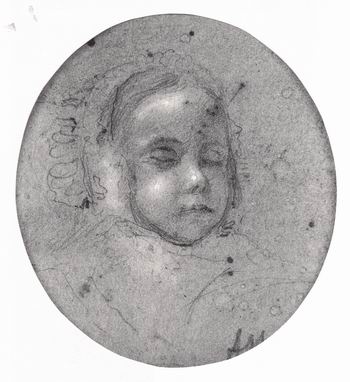
Louis Philippe, Crown Prince of Belgium (1833 – 1834)
Little Louis-Philippe did not fulfill his destiny to be the second King of the Belgians. He died two months short of his first birthday. His father Leopold I, King of the Belgians, recalling the death of his first wife Princess Charlotte of Wales and their son in childbirth, grieved deeply and feared he would never have an heir and this would compromise his position as king of the new Kingdom of the Belgians.
********************

Leopold II, King of the Belgians (1835 – 1909)
Leopold II was the second monarch of Belgium and is known for his exploitation of the Congo Free State in Africa for his personal gain and the atrocities committed against the Congolese people. He married Archduchess Marie Henriette of Austria, daughter of Archduke Joseph of Austria and his third wife Maria Dorothea of Württemberg. The couple had three daughters and one son who died at age 10 after falling into a pond and catching pneumonia. At the time of his death, Leopold II was extremely unpopular and his funeral procession was booed. He was succeeded by his nephew King Albert I, the son of his brother Prince Philippe, Count of Flanders.
********************

Prince Philippe, Count of Flanders (1837 – 1905)
Prince Philippe is the ancestor of the current Belgian royal family as his son succeeded to the Belgian throne as Albert I, King of the Belgians. Philippe refused the offer of the throne of Romania which was later accepted by his future brother-in-law Prince Karl of Hohenzollern-Sigmaringen who reigned as King Carol I of Romania. He married Princess Marie of Hohenzollern-Sigmaringen and had three daughters and two sons.
********************

Princess Charlotte of Belgium, Empress Carlotta of Mexico (1840 – 1927)
Princess Charlotte was the only daughter and the youngest of the four children of Leopold I, King of Belgians and his second wife Princess Louise-Marie of Orléans. Her father named her after his first wife Princess Charlotte of Wales who died in childbirth along with their son. Charlotte married Archduke Maximilian of Austria, a younger brother of Emperor Franz Joseph of Austria, but the couple had no children. After a French-staged referendum in Mexico that supposedly confirmed the will of the people that they wanted an empire, Maximilian agreed to become the Emperor of Mexico. Charlotte was then known as Empress Carlotta of Mexico. Maximilian’s reign of Mexico was short-lived. Many Mexicans wanted a republic instead of an empire and this led to continuous warfare. Three years after he became Emperor of Mexico, Maximilian was condemned to death by a court of war and executed by a firing squad. After the death of her husband, Charlotte apparently developed some kind of mental illness. She spent the rest of her life at Bouchout Castle in Meise, Belgium where her brother King Leopold II oversaw her care.
********************
This article is the intellectual property of Unofficial Royalty and is NOT TO BE COPIED, EDITED, OR POSTED IN ANY FORM ON ANOTHER WEBSITE under any circumstances. It is permissible to use a link that directs to Unofficial Royalty.
Works Cited
- Lundy, D. (2019). Main Page. [online] Thepeerage.com. Available at: http://www.thepeerage.com/. (for genealogy information)
- Unofficial Royalty. (2019). Unofficial Royalty. [online] Available at: https://www.unofficialroyalty.com. (for biographical and genealogy information)
- Wikipedia. (2019). Main Page. [online] Available at: https://en.wikipedia.org/. (for biographical and genealogy information)







